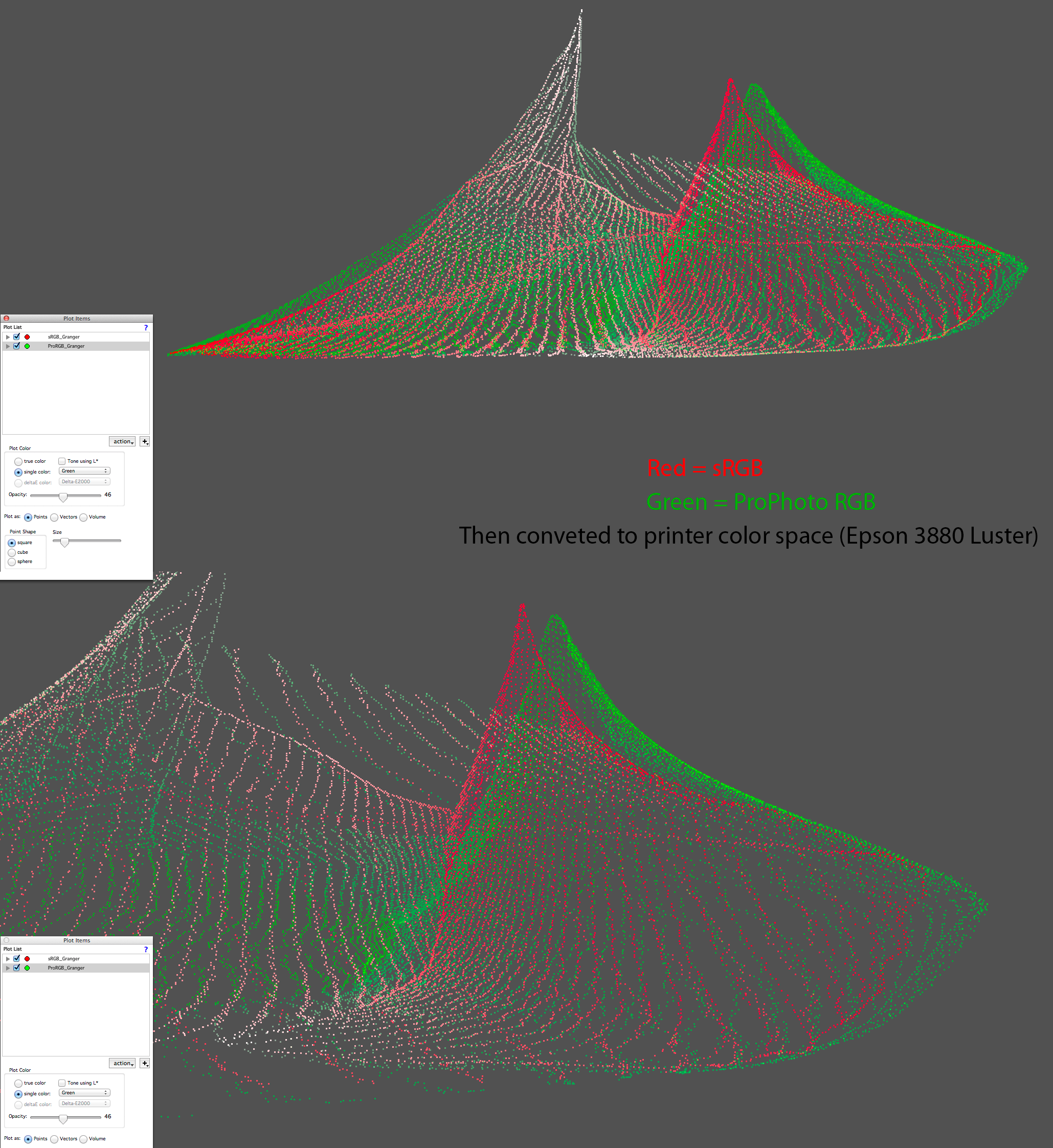Part 3 will not find much favor here, I suspect. But it provides some evidence on the sRGB v ProPhoto / 8-but v 16-bit choices that others raised above.
Within the first 2 minutes, he got
scene oriented (which is really
scene referred) messed up.
He really needs to first understand the significant difference between color (something we can see) and device values, numbers that
may represent something we can't see and therefore are not colors. When showing ProPhoto RGB, he states that it has: (7:58)
Huge amount of extra colors... Not so, sRGB and ProPhoto RGB have the same number of device values if encoded the same (e.g. 16-bit). But we hear this all the time (larger gamut = more colors). The devil is in the details.
The bottom line he's missing is that at least those of us capturing raw data using an Adobe raw processor, the underlying color space IS ProPhoto RGB gamut. But what does Thomas Knoll know about color?

JPEG sRGB shooters, fine. That toothpaste is out of the tube.
Output color technology
already exceeds Adobe RGB (1998) and has done so for years. So, do you throw away colors you
can capture and can output because you may not be able to see some of those real, actual colors on a display? Again, for the sRGB or maybe Adobe RGB (1998) JPEG shooter, Lee's right. For the rest of us, he's not.
Lee needs to examine the differences between luminosity and brightness when talking about 'subjective color' too.
Brightness is a perceptual phenomena. Luminance (Luminosity) is a measure of the total radiant energy from a body. It has
nothing to do with what a human perceives but rather describes the total radiant energy, such as watts/second of a source (the surface of a radiating object like a display). In Photoshop, the layer mode called luminosity is not what's really occurring (I was told its something like the "Luma" which is an old TV RGB transform). If the luminance of a viewed light source is increased 10 times, viewers do not judge that the brightness has increased 10 times.
Lee takes a portrait in sRGB and plots it in sRGB and guess what, it doesn't exceed sRGB. What Lee is missing is the advantage of wide gamut color spaces on dark saturated colors. He doesn't go there. I've shown this illustration in the past, guess I need to do so again.
Simple matrix profiles of RGB working spaces when plotted 3 dimensionally illustrate that they reach their maximum saturation at high luminance levels. The opposite is seen with print (output) color spaces. Printers produce color by adding ink or some colorant, while working space profiles are based on building more saturation by adding more light due to the differences in subtractive and additive color models. There is the issue of very dark colors of intense saturation which
do occur in nature and we
can capture with many devices. Many of these colors fall outside Adobe RGB (1998) and when we encode into such a color space or smaller gamut, we can clip the colors to the degree that smooth gradations become solid blobs in print, again due to the dissimilar shapes and differences in how the two spaces relate to luminance. So the advantage of ProPhoto isn't only about retaining all those out-of-gamut colors it's also about maintaining the dissimilarities between them, so that you can map them into a printable color space as gradations rather than ending up as blobs.
Here is a link to a TIFF (
http://www.digitaldog.net/files/sRGBvsPro3DPlot_Granger.tif) that I built to show the effect of the 'blobs' and lack of definition of dark but saturated colors using sRGB (Red dots) versus the same image in ProPhoto RGB (Green dots). The image was synthetic, a Granger Rainbow which contains a huge number of possible colors. You can see that the gamut of ProPhoto is larger as expected. But notice the clumping of the colored red vs. green dots in darker tones which are lower down in the plot. Both RGB working space were converted to a final output printer color space (Epson 3880 Luster). The effects can be seen on the print!

I can only take 12 minutes of this for now, but the first 12 minutes need a bit of work and I suspect I know what conclusions he'll make about ProPhoto RGB despite how my raw data is processed.